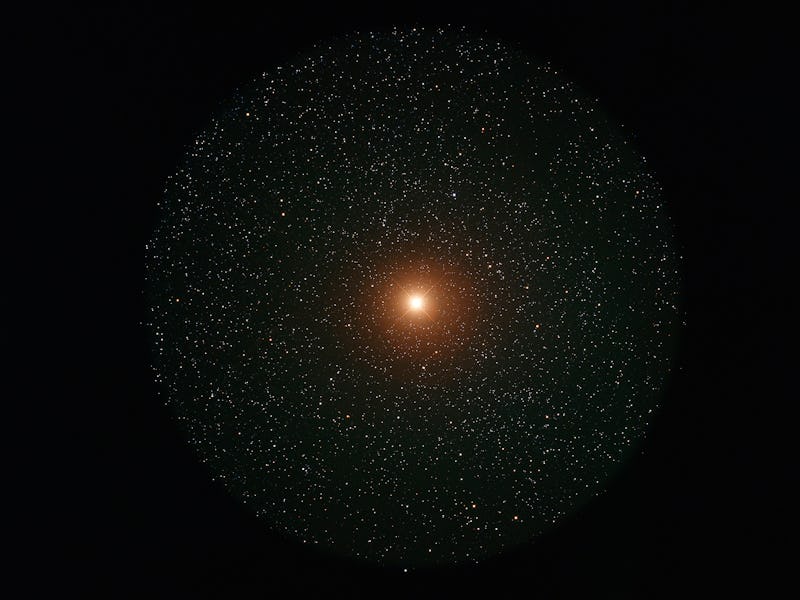The saga of Betelgeuse, the star that won’t die
An astronomical disappointment.

One of the night sky's most famous stars gave astronomers quite the scare this year. Betelgeuse, a red giant star that shines bright in the Orion constellation, started dimming unexpectedly. In fact, it got so dark scientists thought it was on the verge of a massive cataclysm... until it wasn't.
The saga began as the novel coronavirus began to rage across the Earth in December 2019.
INVERSE IS COUNTING DOWN THE 20 MOST UNIVERSE-ALTERING MOMENTS OF 2020. THIS IS NUMBER 17. SEE THE FULL LIST HERE.
While scientists raced to trace the source of Covid-19, astronomers were captivated by a different anxiety. Betelgeuse’s light was dimming. Follow-up observations through the end of 2019 and the first weeks of 2020 showed the star was at around 36 percent of its normal brightness. Some astronomers started to believe Betelgeuse was nearing the end of its life, and possibly about to explode in a supernova.
Supernovae occur when stars run out of fuel and collapse under the weight of their own gravity. Astronomers have only been able to observe supernovae of faint stars in distant galaxies, so the idea of watching Betelgeuse explode in real time, and right above our heads, was — in some ways — far more exciting than the star itself.
This comparison image shows the star Betelgeuse before and after its unprecedented dimming.
The explosion would have been visible to us down on Earth. It would have burned so bright we would see it during the daytime as a bright orb, similar to how Venus looks in the twilight. The explosive light would have lasted for months, before gradually fading over the course of a year or two.
Unfortunately, Betelgeuse got stage fright. After teasing astronomers for months, the star slowly began to regain its brightness in March.
Astronomers are not quite sure what caused the star to dim in the first place, but they have a few theories.
One study published in Astrophysical Journal Letters in June suggested not only was the star not on the verge of death, but that it actually didn't change in luminosity at all. Rather, the paper suggests Betelgeuse's signature bright light was temporarily blocked from our view by material shed by the star in the form of a cloud of dust.
Red supergiant stars such as Betelgeuse often shed material as part of their lifecycle. That material condenses around the star in the form of dust, which absorbs some of the star’s light, obscuring our view on Earth, according to the researchers. Observations from NASA's Hubble Space Telescope later in 2020 appear to back up this theory.
In the first two panels, as seen in ultraviolet light with the Hubble Space Telescope, a bright, hot blob of plasma is ejected from the emergence of a huge convection cell on the star's surface. In panel three, the outflowing, expelled gas rapidly expands outward. It cools to form an enormous cloud of obscuring dust grains. The final panel reveals the huge dust cloud blocking the light (as seen from Earth) from a quarter of the star's surface.
So while we didn’t get to witness a giant star explode in the sky, we may have solved a cosmic mystery for the ages.
INVERSE IS COUNTING DOWN THE 20 MOST UNIVERSE-ALTERING MOMENTS OF 2020. THIS IS NUMBER 17. READ THE ORIGINAL STORY HERE.